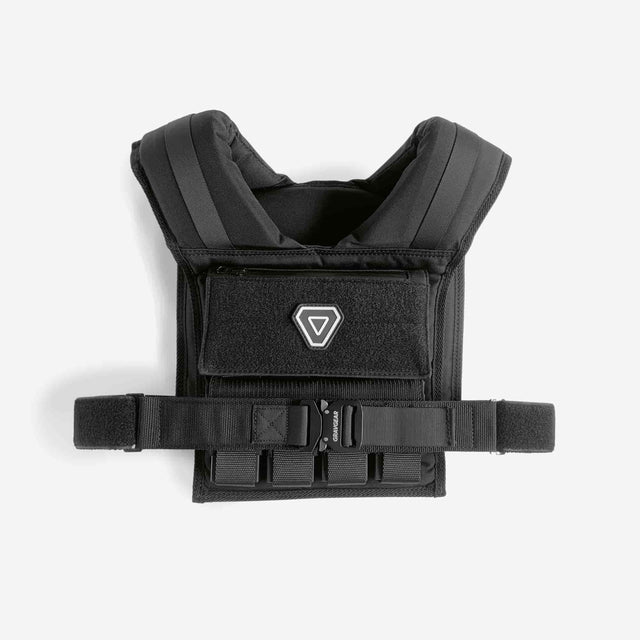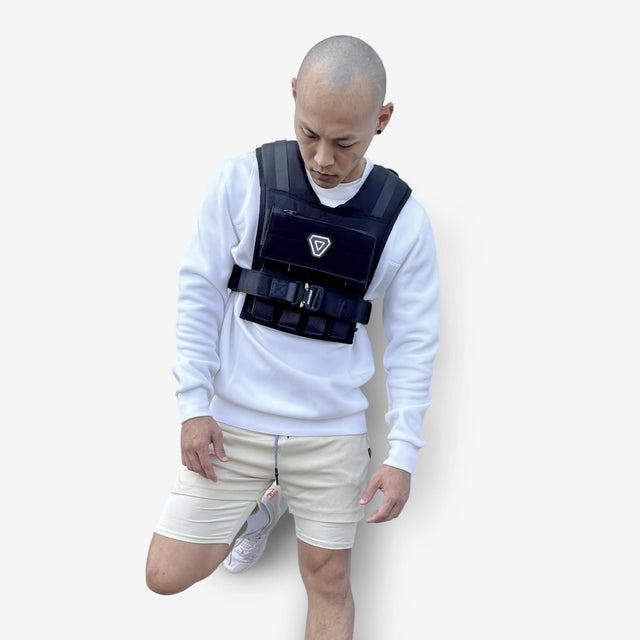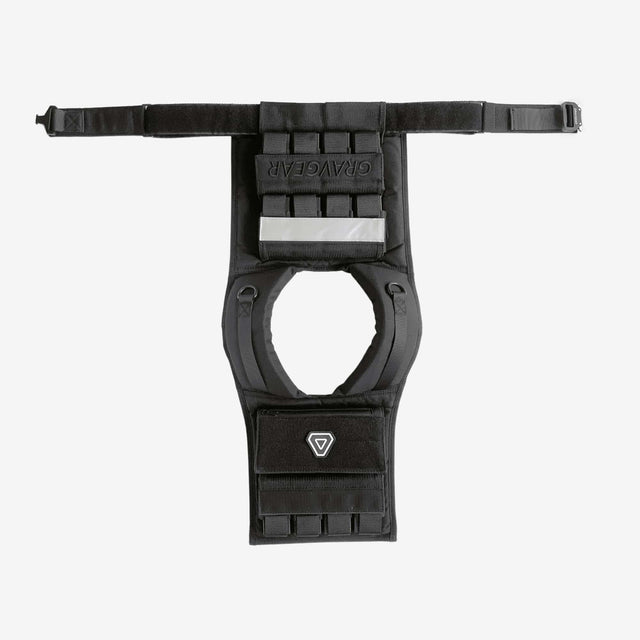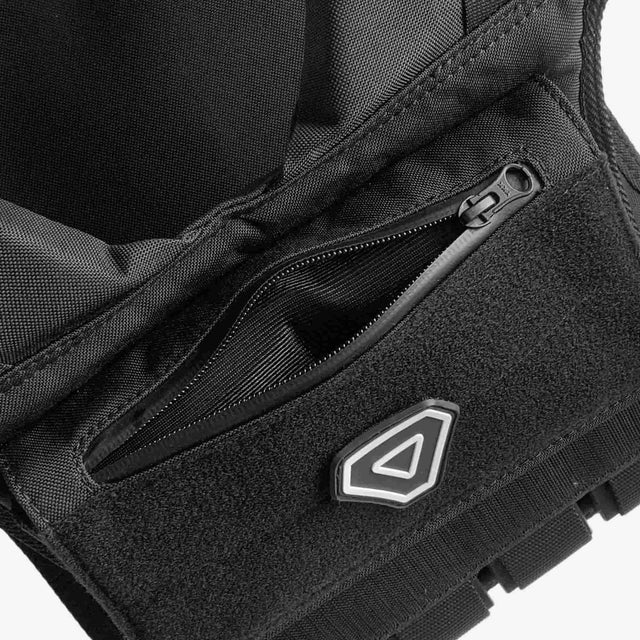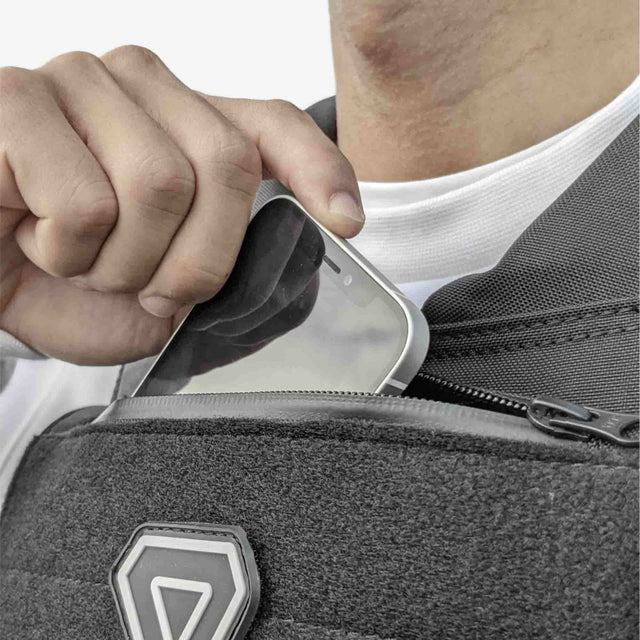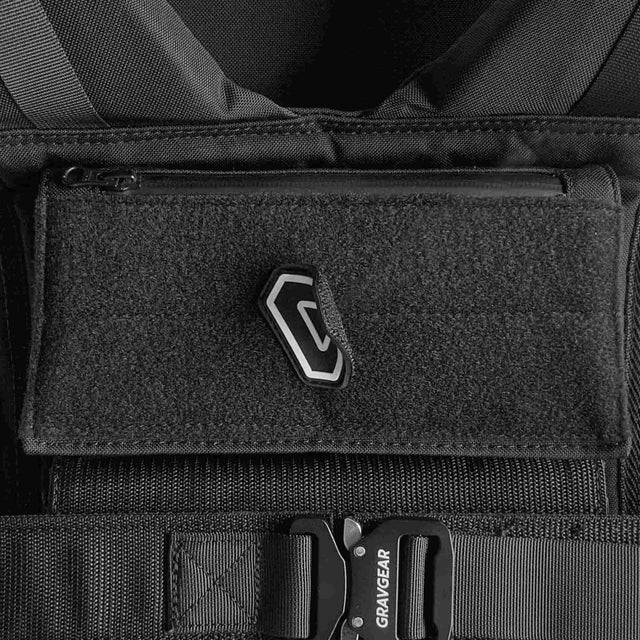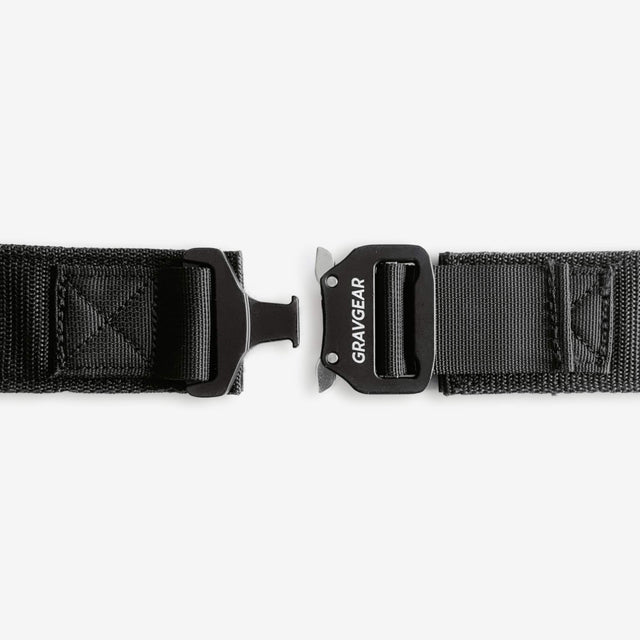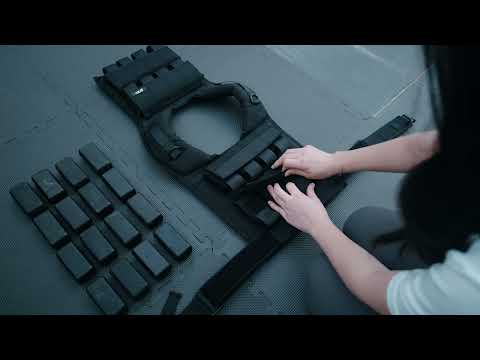Running with A Weighted Vest: Everything You Should Know
Running with a weighted vest is becoming increasingly popular among athletes. Weighted running can improve performance and has been used by many runners for this reason. A weighted vest works by adding more weight to your body while you are exercising, which forces the muscles in your legs to work harder than they normally would when not wearing the vest. If you're looking for an exercise that will push your limits, then it's time to start thinking about whether or not a weighted vest is right for you!
Why run with a weighted vest?
Adding a weight vest probably is not needed if you are solely running for fun.
However, you want better performance, running faster, pushing your limits, and increasing the intensity of running, losing more weight -- adding a weighted vest is a great option. Additional physical benefits include:
- stronger cardiovascular system
- higher bone density
- increased muscular endurance
- burn more calories
Study shows weighted vests are useful for athletes who need to run for longer periods of time during their sport (football/soccer players). Athletes have shown significant improvement in repeated sprinting ability (RSA), fastest time, and total time.
Does running with a weighted vest build muscle?
Yes. You are going to get a stronger lower body by adding resistance on when running.
Research has documented that during running, weight vests may increase the eccentric strength of the extensor muscles during the braking phase of ground contact. Our body will potentially expand the muscle capacity to store elastic energy and improve power output. On top of that, we get musculoskeletal benefits such as increased bone mass.
However, if muscles building is your main goal, a weighted running vest might not be the best option. You will build greater muscles mass with calisthenics or regular weight training.
How long should I run with weighted vests?
There is no particular time limit to run with a weight vest. The important thing is that you try to reach your maximum performance level, increase the intensity and make it harder.
Some runners will do better by using their weight vests during the whole workout session while others prefer wearing them for shorter periods of time. It really depends on what you want to achieve.
If you feel like the weight is too much for your body, reduce weight or take it off. If you are not feeling any pain or unusual stress on your joints in the weight vest training, keep doing what you're doing and push yourself further.
Does running with weights make you run faster?
Definitely. Resisted running is a proven method to up one's running time.
However, you need to be careful not so overstrain yourself and understand how fast you can run with additional weights on your trunk. A weighted vest will increase power output but it doesn't necessarily mean than you are going to be faster.
Here's some tips to increase your running speed:
- use a snug-fit weight vest with at least 15% of body mass
- add short distance sprinting to your running schedule
- 10 to 30 meters is a proven a great range for short distance spriting
- do the sprinting at the end of the day as it is most taxing
How heavy should my weighted vest be?
We can split the weight of weighted vest into 3 categories with a reference to a study:
- Light: Less than 10% of body mass
- Moderate: Between 10% and 19.9% body mass
- Very heavy: More than 30% of body mass
Running with a moderate extra weight which is around 19% of body mass, can contribute the most significant improvements.
For example, a male runner with a body weight of 70kg should run with a weighted vest around 13kg for optimal running improvement.
Of course, this is under the assumption the runner is healthy and disease-free. At the end of the day, you have to listen to your body and always start with a lighter weight. Add weight gradually as you grow stronger.
Will running in a weighted vest help lose weight?
Absolutely. With weighted vests, you somehow turn running into a mixed of resistance training. And resistance training is wonderful at boosting anaerobic metabolism in the leg muscles.
Carrying extra weight in running will cost extra energy and force the body to burn more calories. This is especially obvious when you do weight running for the first time.
But it's not just about running with a weighted vest, you want to keep your diet in check too to aid the weight loss. The idea is to burn more calories than you take in.
Is it bad to run with a weighted vest?
We don't see an obvious drawback of running with a weighted vest after checking with multiple research papers online.
However, if you have a back or spine injury then we would advise against weighted running. It's also not recommended for people with heart disease and other major health problems (e.g., uncontrolled seizures).
Also, there are some potential issues you may want to have in mind wearing a weighted vest while running:
- You might develop a shorter stride pattern because of the increased overall weight in your trunk.
- Shorter stride also means you will have a smaller arm swing than running unresisted.
- There will be some small decreases in step frequency. This is a non-issue for most runners.
Overall, vested running is less likely to introduce long-term habit changes since the center of the weight vest will keep runners in an upright position most of the time.
Does walking with a weighted vest help you lose weight?
The answer is yes. You will burn more calories wearing a weighted vest while walking compared to regular walks. Because the exercise intensity is higher with more resistance.
However, it's not just about the weight of your body you have to consider for calorie burning but also how far and fast you are going on foot.
For example, if both people wear the same load during their walk sessions. One walks at a pace of fewer than 3 kilometers per hour and the other person does 8 kilometers an hour, the high-pace individual will have burned more.
Will I gain more endurance/stamina if I wear a weighted vest all day?
Wearing weighted vest all day without doing anything is not likely to increase your endurance.
For optimal results, only wear a weighted vest when training.
If you want to gain more endurance, then you should do some intensive sports or exercises that will stress your body system and demand it to adapt to the load (e.g., running or biking).
How do I add resistance to running?
There are several options to consider adding weight to your running routine.
You can use free weights, ankle weights, or weighted vest.
If you are interested in wearing a weighted vest then there is no need for further research since it's very effective and practical compared with other options like running with traditional dumbbells in hand.
There are several benefits to choosing weighed vest as running resistance:
- Add extra resistance in center of gravity.
- Allow natural upright position of the body.
- Weight is evenly distributed from the upper body to the lower part of your trunk.
- You can adjust weight as you want by adding or removing weights inside the weighted vest.
- Able to train for a longer period.
Tips for wearing a weighted vest for running
Make sure you wear a weighted vest that is designed for running.
Wear the right sized weight vests which can be adjusted up or down depending on your training intensity level and body fitness progress.
Do not add weights to more than 20% of your total body weight if this makes it difficult to run upright with good form. We
What type of weighted vests is best for running?
A great weighed vest that goes well with running has the following characteristics:
- Very comfortable to wear. A thick cushion is a key to buffer the weight and your trunk.
- Connected to the body snugly. All the weights should not bounce and punch you at every stride.
- Adjustable elastic velcro straps for tightness. We will need to loosen it up a bit as we are tired at the ending phase of running.
- It's possible to customize metal ingots in small increments if needed during your workout.
- Has a rugged design and is made of durable material. Although, make sure it doesn't cause chafing on long runs.
- Compact and cover the least of your trunk. This ensures great heat dissipation for the long run.
- Choose weight vest with reflective strips if you are a night runner.
Running with a weighted vest is great
Runners who want to get more benefit from their workouts should try running with a weight vest.
This great tool can also be used as resistance training for other types of workout routines, like strength training or plyometric exercises.
Check out our premium collection of weight vests if you are not sure where to start. Have fun exploring all these benefits from resisted running.

